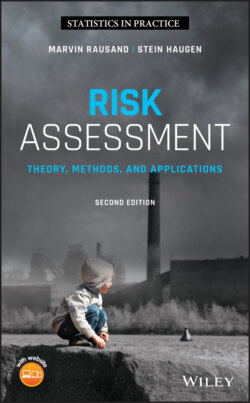Читать книгу Risk Assessment - Marvin Rausand - Страница 88
Example 2.9 (Your subjective probability)
ОглавлениеAssume that you are going to do a job tomorrow at 10 o'clock and that it is very important that it is not raining when you do this job. You want to find your (subjective) probability of the event : “rain tomorrow between 10:00 and 10:15.” This has no meaning in the frequentist (or classical) approach, because the “experiment” cannot be repeated. In the Bayesian approach, your probability is a measure of your belief about the weather between 10:00 and 10:15. When you quantify this belief and, for example, say that , this is a measure of your belief about . To come up with this probability, you may have studied historical weather reports for this area, checked the weather forecasts, looked at the sky, and so on. Based on all the information you can get hold of, you believe that there is an 8% chance that event occurs and that it will be raining between 10:00 and 10:15 tomorrow.
The Bayesian approach can also be used when we have repeatable experiments. If we flip a coin, and we know that the coin is symmetric, we believe that the probability of getting a head is . In this case, the frequentist and the Bayesian approach give the same result.
An attractive feature of the Bayesian approach is the ability to update the subjective probability when more evidence becomes available. Assume that an analyst considers an event and that her initial or prior belief about this event is given by her prior probability :
